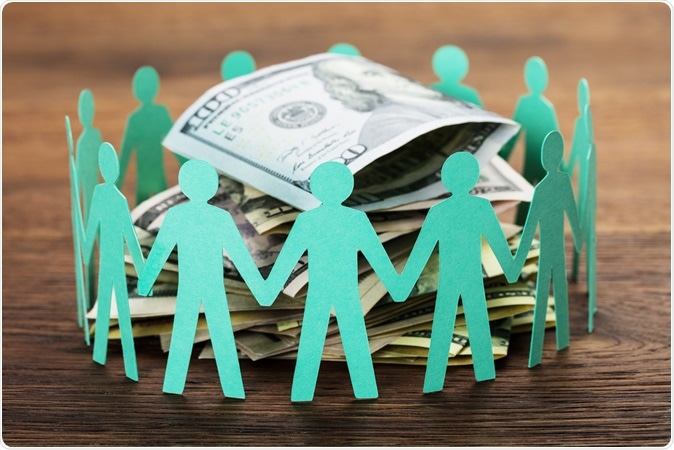
[ad_1]
A research letter has shown that when well meaning and gullible individuals donate for crowdfunding campaigns to raise money for medical treatments, some of them may not be for the benefit of the patients. The money might be used for useless quack therapies which could sometimes be dangerous.

Image Credit: Andrey Popov / Shutterstock
A report last month had noted that these online crowdfunding campaigns in United Kingdom often send in the money to medical quacks and cheats who claim to cure incurable conditions such as cancers. This new study looks at the crowdfunding campaigns in the United States. The results of this new study were published in the latest issue of the journal JAMA this week Tuesday (23rd October 2018).
The study noted that there are several crowdfunding sites in the US that are bringing in millions of dollars from helpful citizens for ineffective treatments such as homeopathy and dubious treatments. Dr. Ford Vox, an ethicist and a brain rehabilitation specialist at the Shepherd Center in Atlanta specializing on spinal cord and brain injuries led this new study along with his colleagues.
Vox explained that they had become familiar with crowdfunding sites like GoFundMe over the past few years because many of their patients would resort to financial help obtained from these sites. He noted however that people were donating money for dubious treatments such as hyperbaric oxygen therapy (HBOT) in brain injuries. HBOT in brain injuries has not been proven to be effective in evidence based studies he explained. This alerted them to the practice of crowdfunding for dubious practices.
Soon they started looking at other crowdfunding sites from US and Canada for five dubious or quack treatments – stem cell treatments for spinal cord and brain injury, HBOT for brain injuries, homeopathy or naturopathy for cancers and antibiotic therapy for chronic Lyme disease. Dr. Arthur Caplan, a bioethicist at New York University said that they badessed the campaigns from four major crowdfunding sites – GoFundMe, YouCaring, CrowdRise, and FundRazr.
Results between 2015 and 2017 revealed that people had asked for over $27 million for these five treatments in 1,059 campaigns and received $6.77 million. The numbers received are likely to be more because some of these campaigns were active at the end of the study period. Highest donations went to homeopathic and naturopathic cancer treatments ($3.46 million from 474 campaigns) followed by stem cell therapy for brain injuries ($1.2 million) with 98 percent of all funds raised through GoFundMe.
“We identified nine named practitioners and eight countries that campaigners intended to visit, including clinics in Germany and Mexico for homeopathic or naturopathic cancer treatments, a New Orleans clinic offering hyperbaric oxygen therapy for brain injury, and clinics in the United States, Panama, Thailand, India, China, and Mexico for stem cell therapies,” they wrote.
Vox explained that while homeopathy and naturopathy as such may not be harmful, they can keep a person from getting the right treatment at the right time for their cancers. Stem cell therapies too are dubious because several unethical and unscrupulous clinics are using stem cell therapy for almost all ailments with no scientific evidence whatsoever. Some of these can be seriously harmful, Vox explains. The Food and Drugs Administration (FDA) has issued public warnings against unproven stem cell therapies and homeopathy.
Vox and his team write that these crowdfunding sites and the money pouring in from them could be keeping alive several unscrupulous quacks in business and grow medical scams that could be detrimental to national healthcare. They add, “Assuming the funds raised are spent to pay for these treatments, donors indirectly contributed millions of dollars to practitioners to deliver dubious, possibly unsafe care.” They suggested that these crowdfunding sites could filter out quack treatments and help the genuinely needy and uninsured or under-insured get the money for their treatment.
GoFundMe in a statement replying to this study said, “We always encourage people to fully research whatever it is they are raising money for and to be absolutely transparent on their GoFundMe page, so donors can make an informed decision on what they’re donating to.”
Source:
Vox F, Folkers KM, Turi A, Caplan AL. Medical Crowdfunding for Scientifically Unsupported or Potentially Dangerous Treatments. JAMA. 2018;320(16):1705–1706. doi:10.1001/jama.2018.10264 – http://jamanetwork.com/journals/jama/fullarticle/10.1001/jama.2018.10264
[ad_2]
Source link